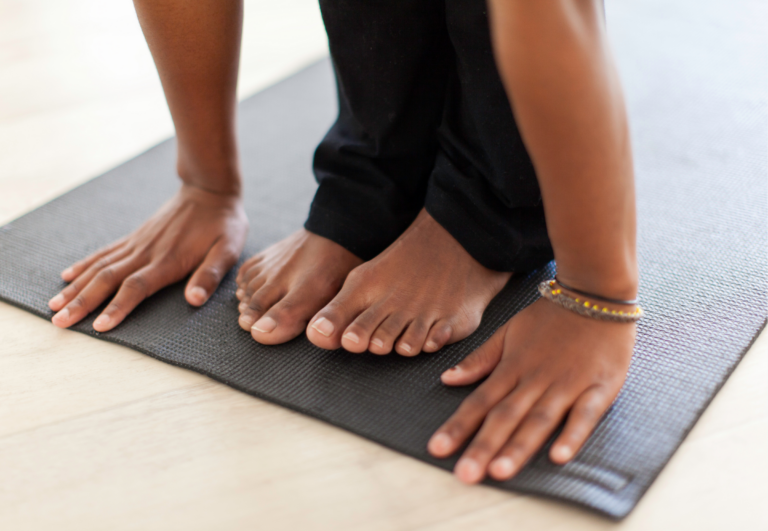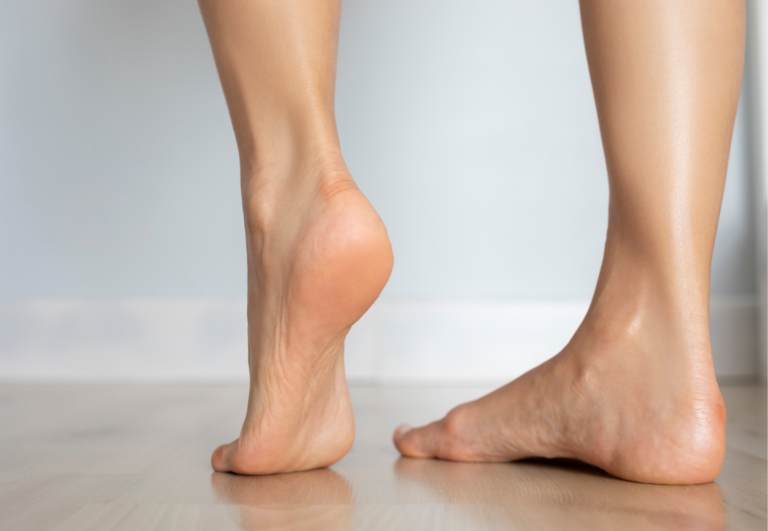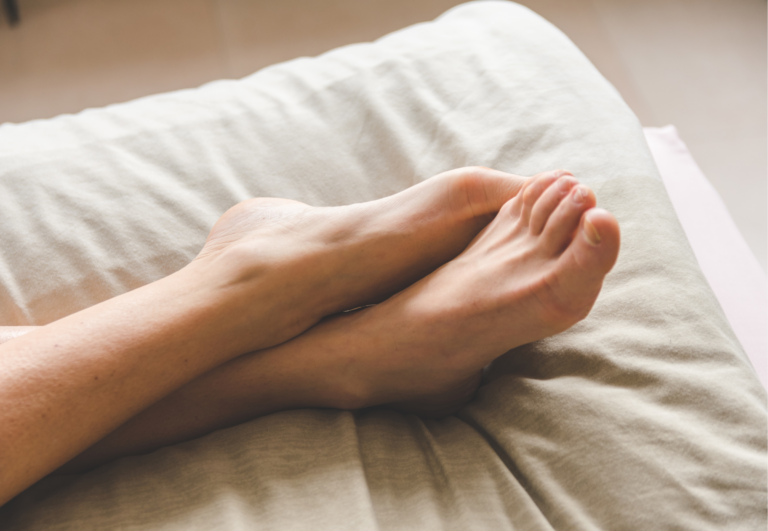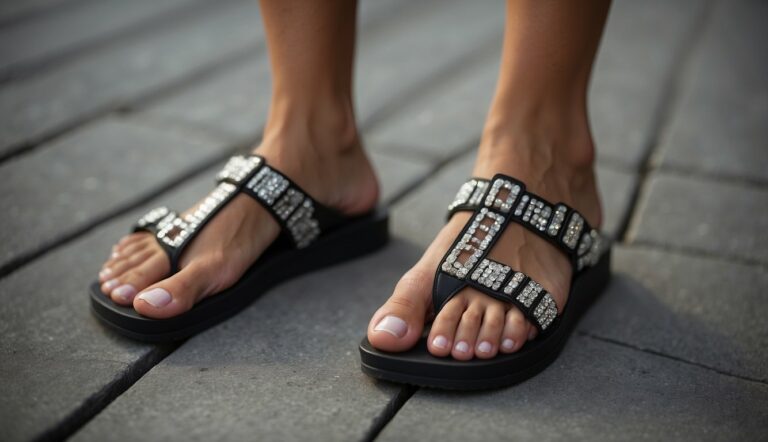Toe Spacers and Shoe Fit: Maximizing Comfort and Alignment
Understanding the relationship between toe spacers and shoe fit is vital for runners, dancers, or anyone who demands a lot from their feet. I’ve learned through experience that using toe spacers can greatly enhance comfort, especially if you’re prone to foot pain or toe crowding. By gently separating the toes, these simple devices can encourage proper alignment and distribute pressure more evenly across the foot.
However, not all shoes are created equal when it comes to accommodating toe spacers. The key is to find shoes that provide ample room in the toe box, allowing the spacers to sit comfortably without squishing the toes. This can prevent a host of issues related to ill-fitting shoes, such as bunions, corns, and calluses, ensuring your feet stay comfortable throughout the day.
When I assist people with their shoe choices, I always emphasize the importance of a properly fit shoe. It’s not just about the overall size; it’s also about making sure there’s enough space for toe spacers, if they use them. A well-fitting shoe with enough room for toe spacers can be the difference between a painful experience and a comfortable one, making all the difference in your daily activities or athletic endeavors.
Toe Spacers and Shoe Fit: 8 Important Factors To Consider
In my experience, finding the right toe spacers involves not only the correct size but also ensuring compatibility with your footwear. Accurate fitting is crucial for comfort and foot health.
When considering the fit of shoes while using toe spacers, there are several important factors to keep in mind:
1. Toe Box Width
A spacious toe box is essential when wearing toe spacers, as it allows your toes to spread out naturally. Tight toe boxes can negate the benefits of toe spacers by squeezing the toes back together, potentially causing discomfort or even pain.
2. Shoe Size
When I select toe spacers, I always consider the shoes I plan to wear them with. Traditional footwear such as high heels or shoes with narrow toe boxes often don’t accommodate toe spacers well. Conversely, barefoot shoes, designed with wider toe boxes, are typically more compatible. Here’s a basic guideline to follow:
- Sizing: Measure your foot’s width and length in inches. Match these dimensions with toe spacer size charts.
- Fit: They should fit snugly between toes without causing pain or discomfort. If you can’t freely wiggle your toes, the spacers are too tight.
It is optimal to try on toe spacers with the shoes you most frequently wear to make sure they fit comfortably together.
You may need to go up a half size or more in your shoes to fit toe spacers comfortably. This helps prevent any undue pressure on the toes or nails, which can lead to discomfort or injury.
3. Shoe Flexibility
Shoes made from materials that offer stretch and flexibility, such as mesh or soft leather, can better accommodate the natural expansion of your feet with toe spacers. Rigid materials may not allow enough room and could restrict the benefits of the spacers.
4. Spacer Thickness
Consider the volume the toe spacers add between your toes. Thicker spacers designed for therapeutic use may not fit comfortably in standard shoes and are typically reserved for use at home or during specific activities where shoes aren’t required.
5. Insole Adjustments
Some shoes come with thick insoles that take up significant space inside the shoe. Removing these can create more room for toe spacers, but assess whether the loss of insole support negatively impacts your foot health and comfort.
6. Activity Type
The intensity and type of activity you engage in while wearing toe spacers will influence the type of shoe you need. For example, running or sports activities may require more supportive shoes with ample room to accommodate movement with spacers.
7. Duration of Wear
If you plan to wear toe spacers for extended periods, ensure that your shoes are comfortable for long-term wear. Shoes that feel fine with spacers for an hour may not be suitable for a full day’s wear.
8. Personal Comfort
Comfort is subjective and varies from person to person. Some may prefer a snug fit with minimal spacer thickness, while others may require more room. It’s important to find a balance between the spacer’s function and your personal comfort level.
When To Consult a Professional
If you’re unsure about the size or fit of a toe spacer or if you have a pre-existing foot condition, it’s always best to consult a professional. A professional fitting can provide:
- Personalized Advice: Tailored recommendations based on foot anatomy and needs.
- Proper Fit: Ensuring the toe spacers work in harmony with your shoes for daily activities.
Remember, improper use of toe spacers can lead to further foot issues, so professional guidance can be invaluable, especially if you’re new to using them.
Toe Spacers Effects on Foot Health
Toe spacers can play a crucial role in managing foot conditions and improving overall foot health by aligning toes to their natural position and enhancing foot strength.
Addressing Common Foot Conditions
Bunions and hammertoes are two painful foot conditions often caused by poorly fitting shoes that crowd the toes. By wearing toe spacers, I’ve found they can help in the realignment of the toe joints which can reduce the pressure and pain associated with these conditions. For those with plantar fasciitis, toe spacers can assist in stretching the plantar fascia thereby helping to alleviate heel pain.
Long-Term Benefits for Foot Musculature
Consistently using toe spacers can lead to improved foot musculature over time. They encourage a more natural toe spread, which enhances arch support and distributes weight more evenly across the foot. This reinforcing effect can contribute to the development of stronger foot muscles, potentially reducing the need for orthotics. Moreover, the strengthened foot structure can assist in improving balance and gait.
Proper Use and Practices

When integrating toe spacers like Correct Toes® into your routine, it’s vital to apply them correctly and adhere to a recommended usage schedule. This will aid in achieving the desired effects on the mobility and stability of your feet.
Application Techniques
First, ensure your toe spacers fit snugly but comfortably. Begin by sitting down and placing the toe spacer between the first two toes, and then gently press the remaining parts between the remaining toes. Be deliberate about the placement to avoid any discomfort. A podiatrist can provide personalized advice on fitting, if necessary.
Timing and Frequency of Use
Start with short periods of use, such as 10-15 minutes, and gradually increase as your feet adjust. Consistent daily use can contribute to better mobility and stability, which are critical in recovery from foot-related issues. However, monitor your feet for any signs of pain or discomfort and adjust usage accordingly.
Potential Challenges and Solutions
When using toe spacers, it’s essential to address potential discomfort and evaluate their effectiveness. I’ll discuss practical approaches to these common challenges, ensuring you can make the most out of your toe spacers.
Overcoming Discomfort and Pain
Toe spacers can initially cause discomfort, especially if you’ve never used them before or if you have pre-existing toe issues.
- Start Slow: Begin with short periods of wear and gradually increase as you acclimate.
- Right Fit: Ensure your toe spacers fit well; poor fit can exacerbate pain.
If you experience persistent pain that disrupts your day-to-day activities, considering different shoe styles that provide a roomier toe box might bring pain relief. An article on orthotic solutions advises that appropriate footwear can significantly reduce foot discomfort.
Managing Expectations of Effectiveness
Toe spacers are often praised for their ability to alleviate a range of toe problems; however, managing expectations is crucial for user satisfaction.
- Realistic Goals: Understand that toe spacers provide gradual benefits and are not a quick fix for structural toe issues.
- Consistent Use: For effectiveness, incorporate the spacers into your daily routine as guided.
A study examining the impact of Correct Toes indicated improvements in balance and strength among athletes, highlighting that consistent use may aid in rectifying foot problems. However, it’s essential to remain patient and consistent with their use to see results.
Toe Spacers Types and Potential Benefits
Toe spacers often play an integral role in maintaining foot health by helping to realign and properly space the toes. They come in various materials such as silicone, gel, and foam, and serve multiple functions from improving balance to reducing discomfort in foot conditions.
Types and Materials
- Silicone: Flexible and soft, silicone toe spacers conform easily to your foot’s shape, making them comfortable for everyday wear.
- Gel: Similar to silicone, gel toe spacers provide a supple, cushioning effect and can be soothing for sore toes.
- Foam: Lightweight and airy, foam separators are often used for temporary relief and can be ideal for sensitive skin.
- Rubber: Durable and firm, rubber toe spacers offer a stronger resistance, good for those needing a more robust option.
- Cotton: While less common, cotton toe spacers offer a natural and breathable alternative but tend to be less durable.
Materials like silicone and gel are especially popular due to their flexibility and comfort. These toe spacers are often preferred for their ability to be washed and reused multiple times.
Function and Benefits
Alleviating Discomfort: Toe spacers are designed to reduce pain caused by conditions like hallux valgus, more commonly known as a bunion. By maintaining correct toe alignment, they help in distributing pressure evenly across the foot.
Balance and Strength: Studies have suggested that toe spacers can improve balance and foot strength in athletes, by allowing toes to spread naturally which can enhance athletic performance.
Proper shoe fit is essential when using toe spacers. Shoes with a wider toe box are generally recommended to accommodate the spacer without causing discomfort or undue pressure on the toes. Regular use of a well-fitted toe spacer can be beneficial in managing toe and foot conditions, improving balance, and promoting overall foot health.





